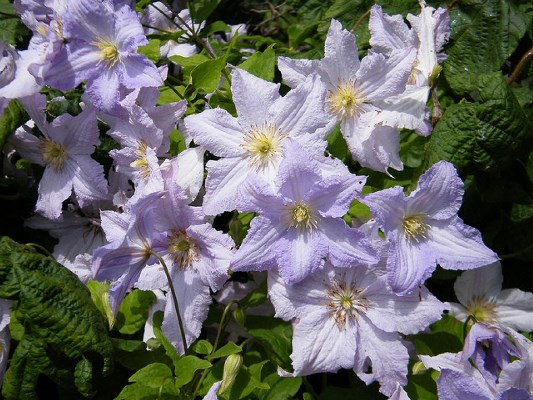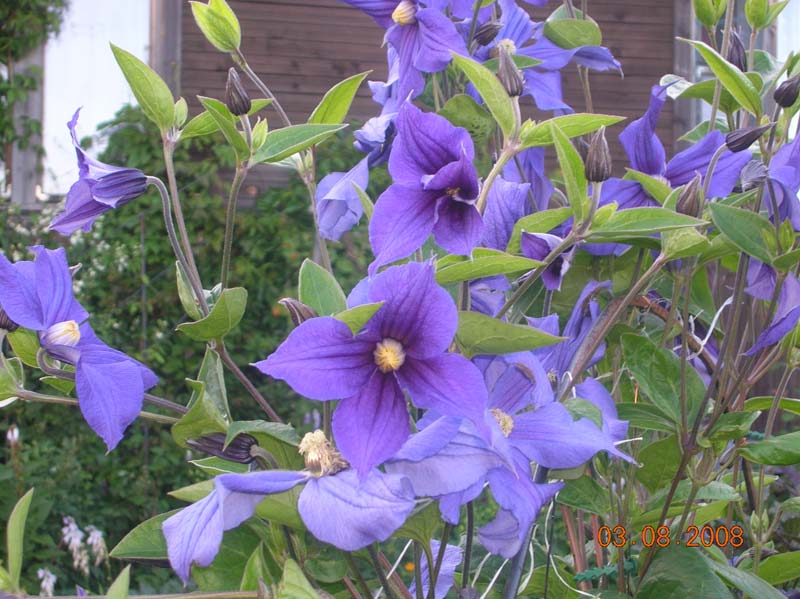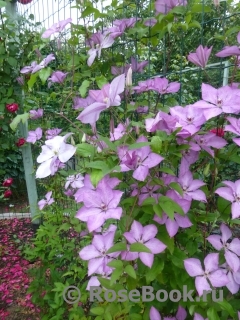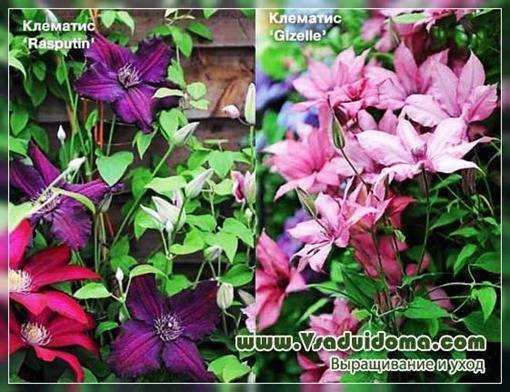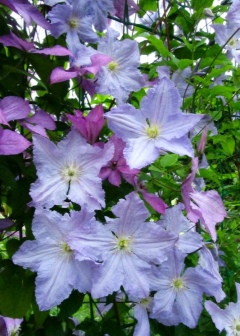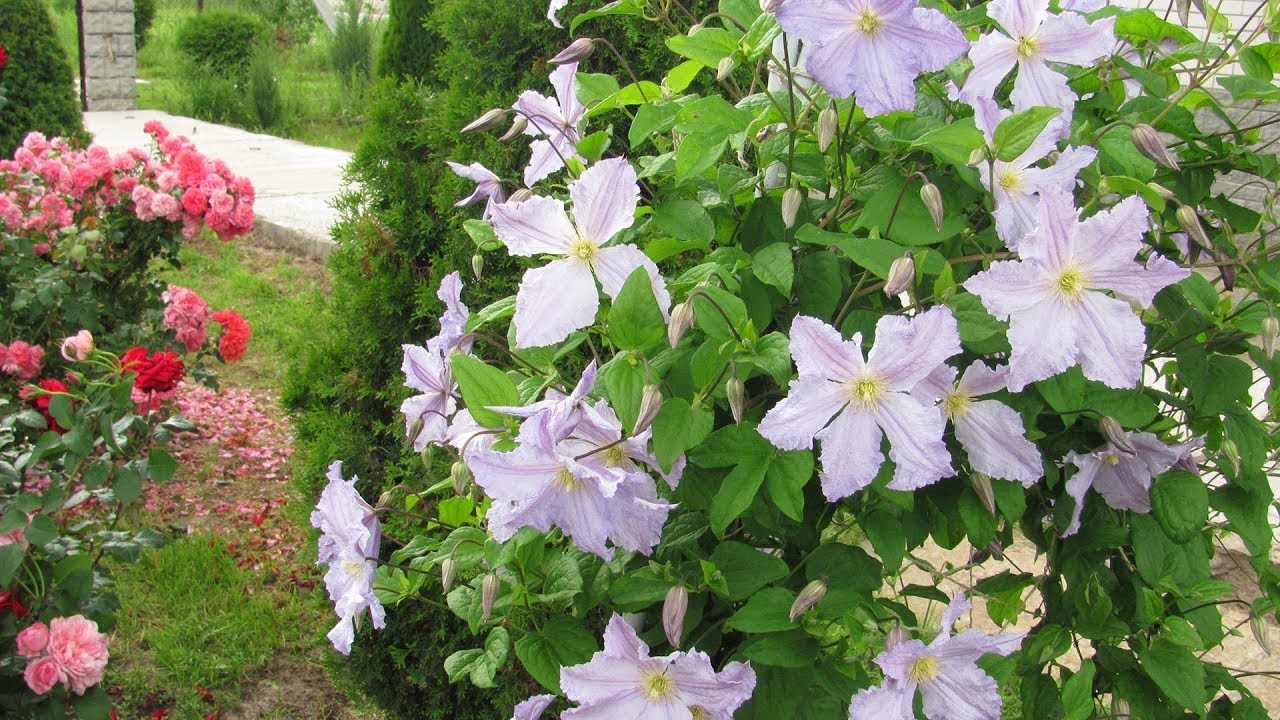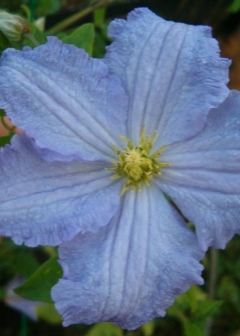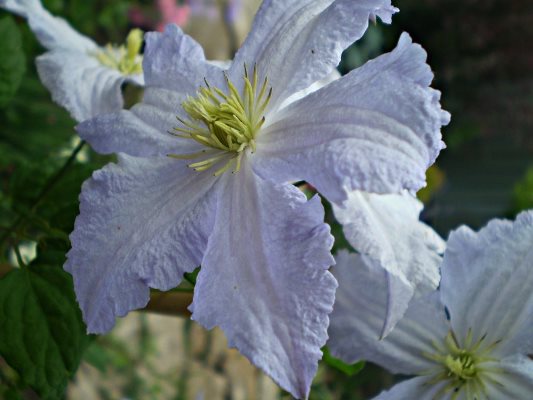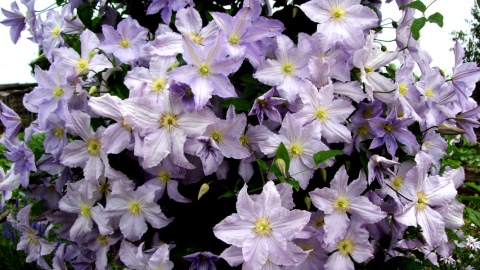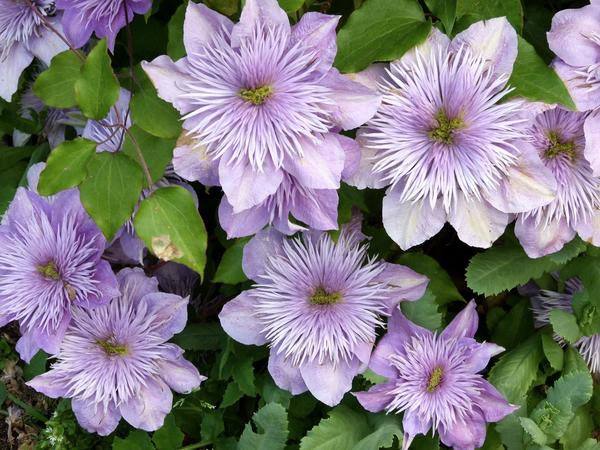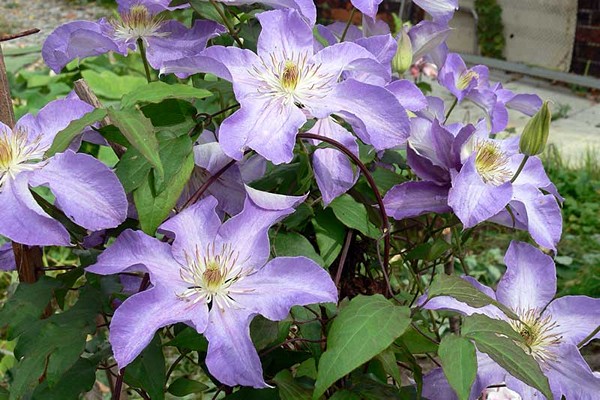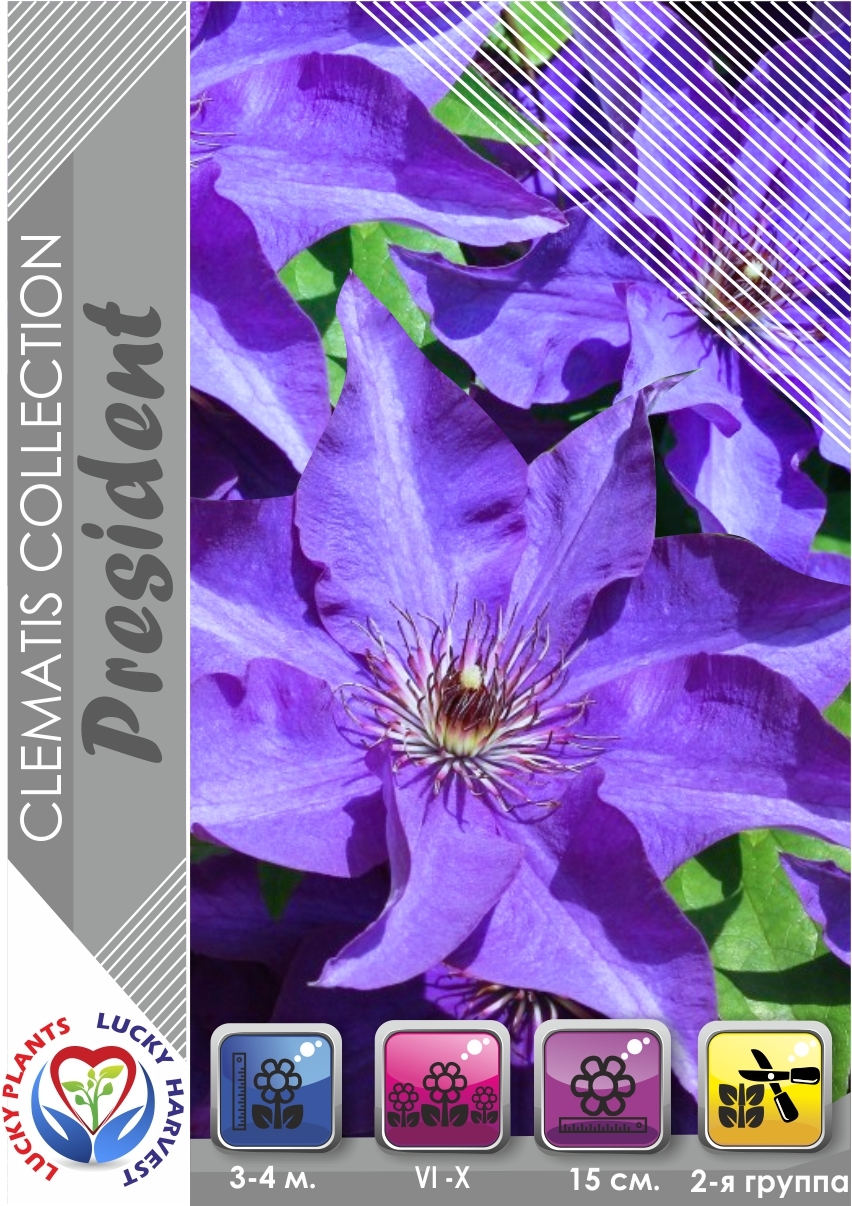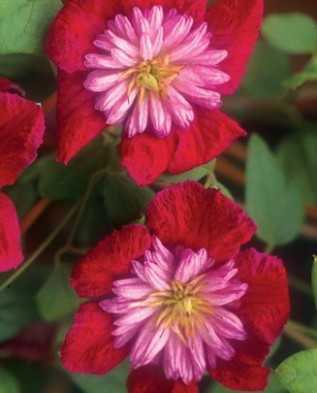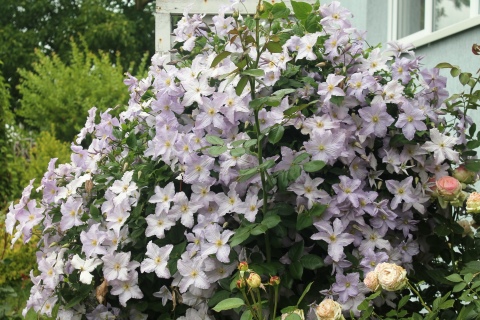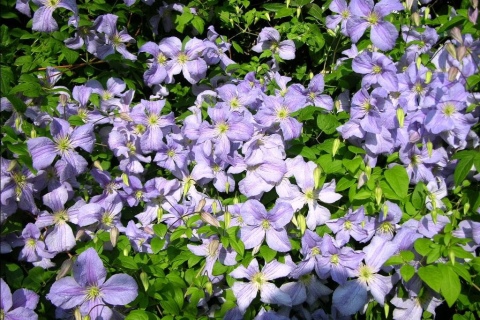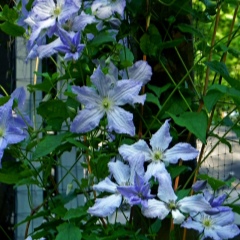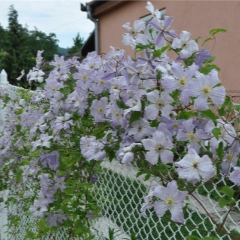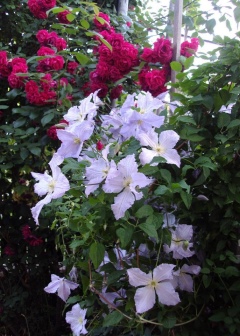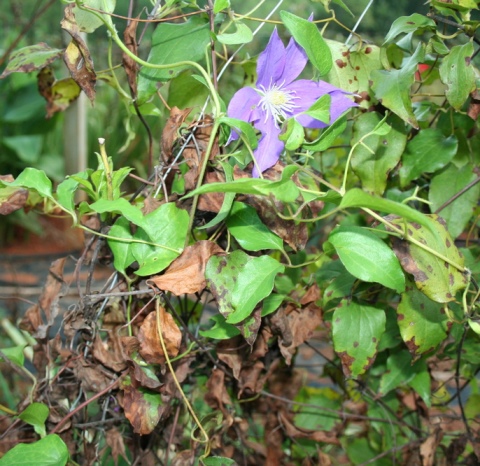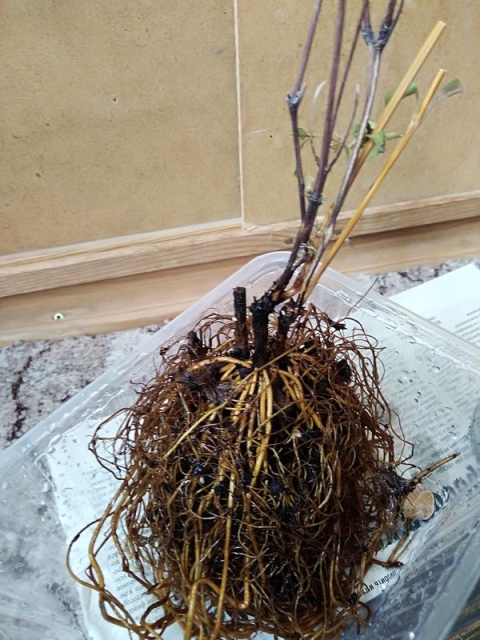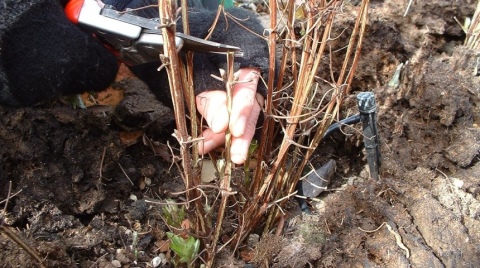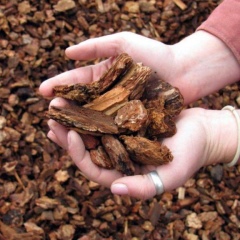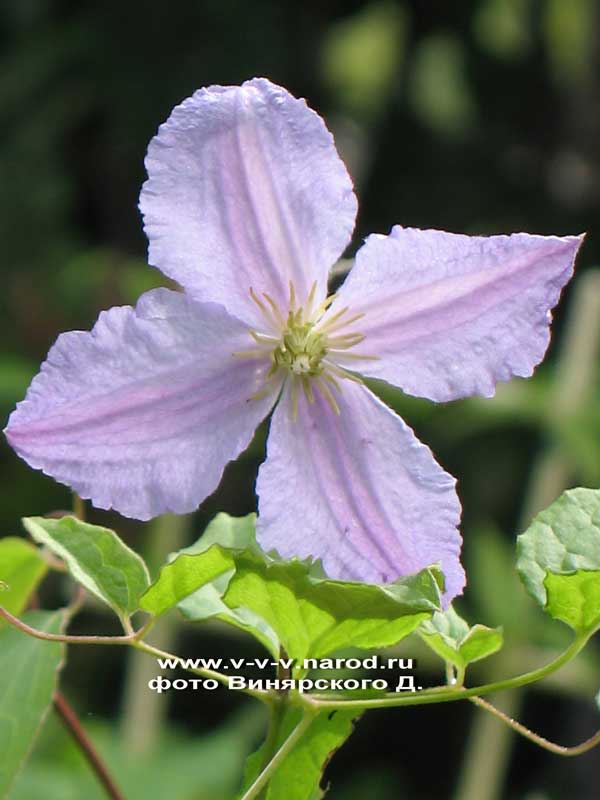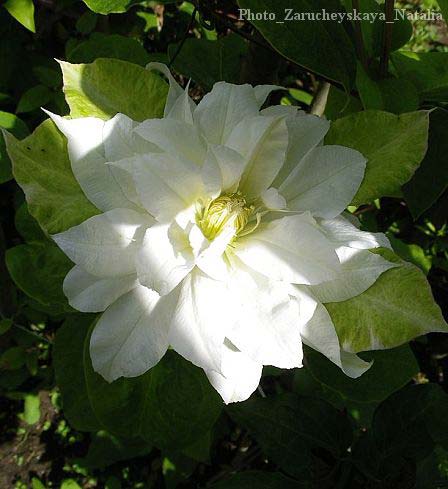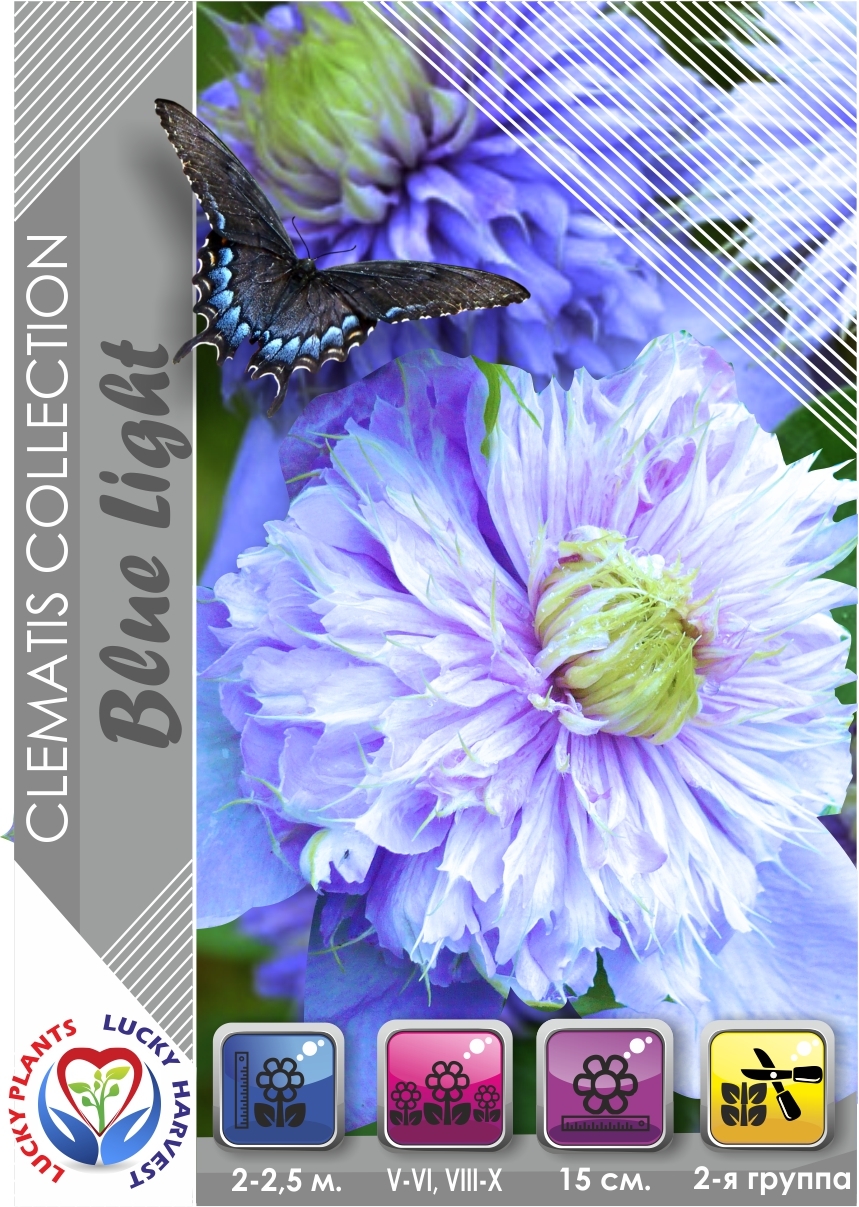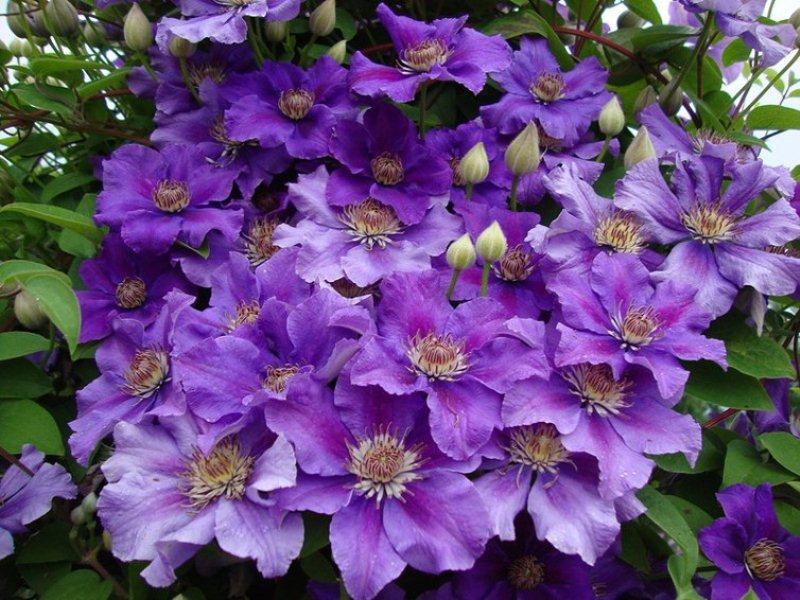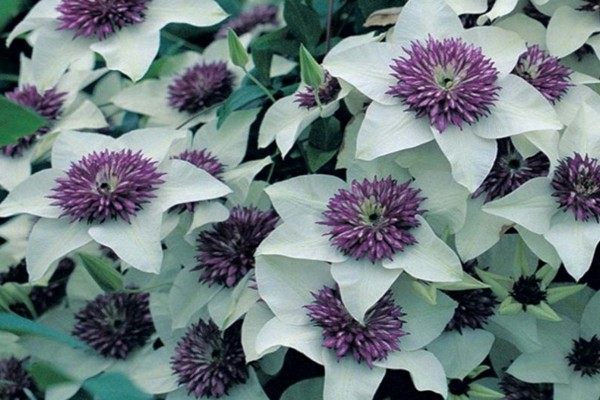How to care for your culture
After planting, it is necessary to provide for a schedule of watering, loosening and feeding the crop, then clematis will quickly gain green mass and please with abundant flowering by the second half of July.
Watering and fertilizing
Water the clematis as needed. If the air temperature rises, then the number of irrigations is doubled. At the same time, make sure that the root system is not waterlogged.

During the adaptation period, clematis is not fed, then fertilizers are applied according to the schedule:
- when growing greens, add nitrogenous dressings;
- when budding, they are fed with potassium;
- after flowering, mineral combined mixtures are added.
Mulching and loosening
Clematis needs full mulching. To do this, crushed bark is introduced into a circle around the main stem. Mulch helps to retain moisture and reduce watering. Mulch protects the root system during the hot season, when the vine is focused on shoots and budding.
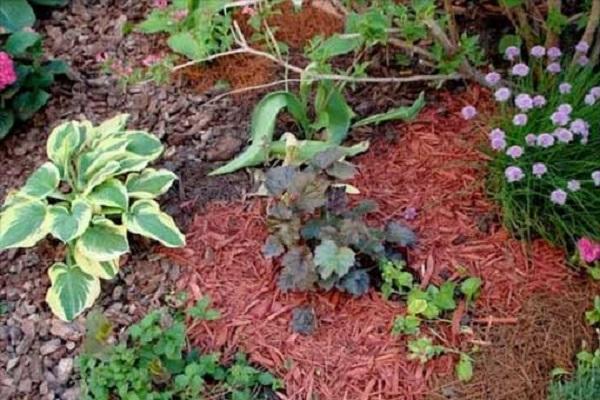
Pruning
Full autumn pruning is a must for growing. After flowering, the vines are cut to a residue of 20 centimeters above the soil level. Scourges with faded buds are burned. Full pruning contributes to a more successful wintering of the bush, and also additionally rejuvenates the plant. After full pruning in autumn, clematis blooms again on new stems and shoots.
Preparing for winter
To minimize the risk of freezing of the root system, clematis is mulched with straw before wintering. The straw layer should not be less than 10 centimeters. Experienced gardeners recommend covering the bush left after pruning for the first winter. For shelter, burlap or non-synthetic fabric is used.
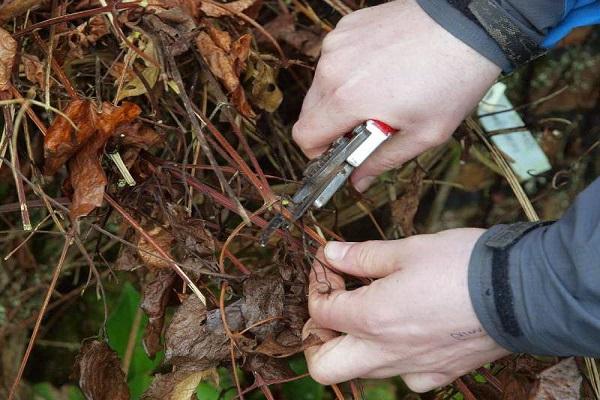
Reproduction
The Blue Angel is a hybrid variety, so it makes sense to propagate it only in vegetative ways. The seeds do not retain varietal properties. Moreover, this method is laborious and time consuming. A full-fledged bush from seeds can really be obtained only after 3-4 years.
Cuttings
Cuttings are conveniently prepared during autumn pruning, but then they will have to be kept alive until spring, which is very problematic. It is better to cut them in the spring, in May, when each shoot contains at least 5-6 live buds. From each shoot, take the middle, from which cuttings are cut.
It is easy to root them in water or substrate. The first option is the fastest, but then when transplanted into the ground, the delicate roots of the cutting are damaged. He may die. In the substrate, rooting takes longer, but more reliably. If the stalk already grows, it will not die and with a probability of 99% will live to be transplanted into an open area in the garden.
The substrate should be lightweight and breathable. Perlite and vermiculite, light garden soil and coarse sand - all mix and arrange in flowerpots. Place the cuttings there and cover with jars for a greenhouse effect. At a temperature of + 26 ° C, the roots appear quickly - after 1-2 weeks. Then the banks are removed and the seedlings are accustomed to room temperature.
Layers
This is the easiest way to breed this hybrid. In an adult bush, several lower vines are taken to the sides, bent to the ground and buried in. The place of contact with the ground is often watered with warm rainwater. After a month, the layers will take root, but you cannot immediately separate it.
At first, the young seedling feeds on the mother bush. Its roots are still too weak to support full growth and development. The layers are in such a dependent state all season. Some gardeners even leave them for the winter, and only separate them in the spring. So there is a greater chance that the seedlings will take root and continue to grow after separation.
By dividing the bush
The bush is divided not only to propagate it. This is a necessary procedure for rejuvenating the bush. With a long stay in one place, the bush thickens, grows worse and stops blooming. They divide it in two ways: radically and sparingly.
The sparing method is the simplest. With the help of a shovel, part of the bush is chopped off and transplanted to a new place. Several such parts are separated if the bush is too old and overgrown. Each segment is a full-fledged young bush that can bloom the next year.
Radical separation is a more difficult, but in some cases necessary, way to rejuvenate a plant. The bush will have to be dug out in its entirety, the roots, and then the stems, will have to be divided into separate parts. One bush can make a dozen or more independent plants. For them, you need to think about a place in the garden in advance and prepare planting holes.
Features of planting and care
The survival rate of seedlings of the variety is assessed as high, but the choice of a place for their placement is a rather ambiguous task.
In open areas in direct sunlight, the color of the petals fade strongly and becomes almost white
The problem is that the flowers of this clematis "fade" very much in direct sunlight (almost white). In heavily shaded areas, the bushes are excellently gaining green mass, but few flowers are formed on them. Therefore, for the "Hagley Hybrid" you need to choose areas that are in partial shade or are illuminated by the sun only part of the day. In relation to buildings, the south-east or south-west exposure is best suited. However, some gardeners believe that as a result of the burnout, the color of the flowers of the variety becomes even more interesting: the pink color almost disappears, but at the same time the mother-of-pearl hue is more pronounced, giving the flowering bushes an exceptionally elegant look.
Trimming group
Caring for adult plants comes down to periodic feeding, as well as taking care that the roots do not suffer from stagnant moisture and do not dry out in the heat. Clematis trimming group "Hegley Hybrid" - the third. In autumn, all stems are radically shortened, leaving no more than 2 nodes above the surface of the soil, and the soil is mulched with peat, humus or other loose material. In the middle lane and more southern regions, this is enough so that the growth buds do not suffer from frost. In areas with cold and long winters, additional shelters are organized for the parts of plants remaining above the ground. In the spring, mulch and shelters are removed. After regrowth of young shoots, sanitary pruning is carried out, removing weak and damaged ones.
Plants of this variety are used both for single planting and in combination with other flower crops.
In the photo, Clematis "Hegley Hybrid" looks unusually neat and delicate. The plant can be used both for single plantings (for example, in the center of a flower bed), and together with other crop varieties to create flower arrangements with a horizontal or vertical transition of colors. The bushes look especially interesting next to clematis, which have darker (deep purple or bright red) flowers, as well as with rose bushes of contrasting shades. Vine stems are not very long, and the width of the bush usually does not exceed a meter. Therefore, the variety is easy to grow in container culture.
Vases with clematis look great on verandas, patios, in the interiors of halls and offices
Description of Clematis Blue Angel
Originally the variety was called "Blekitni aniol" (from Polish - "Blue Angel"). All translation variations are used in Russia - "Blue Angel", "Blue Angel", "Blue Angel", "Blekitney Aniol", etc.
Clematis Blue Angel, photo and description of which is given in the article, grows up to 4 meters. It is a garden liana with curly shoots of a gray-brown hue, densely covered with medium-sized light green leaves. The crown is spreading, trifoliate wide leaves are arranged in pairs.The root system of the Blue Angel variety clematis is soft, fibrous with cord-like branches.
Clematis Blue Angel, according to florist reviews, belongs to the unassuming varieties with minimal soil requirements. The Blue Angel is considered a hardy plant. Vine roots can withstand temperatures down to -30 degrees. But shoots with the onset of night frosts need shelter. Blue Angel hybrid clematis is grown both in the central part of Russia and in the Northwest regions and the Far East.
The best soil for the Blue Angel is fertile light loam that is water permeable. It is watered abundantly, but not poured, an excess of moisture can be destructive for it.
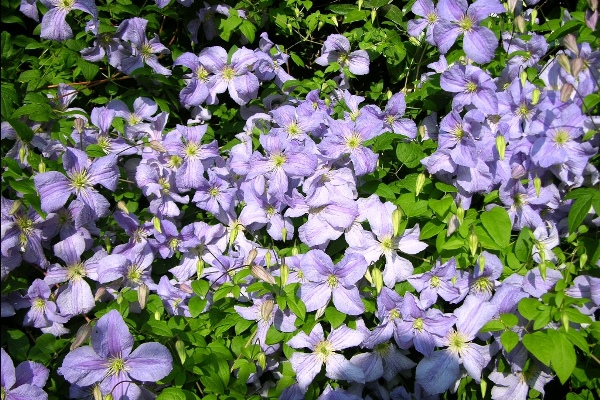
Clematis trimming group Blue Angel
The Blue Angel clematis variety belongs to the third pruning group. Its buds are formed on the shoots of the current year. From September to October, the shoots are shortened to 20 cm from the ground, leaving several pairs of buds. Such pruning contributes to the rapid gain in strength of the Blue Angel clematis during the flowering period. The more buds remain, the more abundant and longer flowering will be, but with smaller flowers.
Clematis Blue Angel responds well to anti-aging pruning. Once every 3-4 years, one or two strong shoots are chosen and shortened to 30-35 cm. The rest are cut at the root. This method helps the bushes to rest during the winter and to intensify growth in the spring.
Flowering features
Photos of Clematis Blue Angel (Blekitney Aniol) confirm the abundant flowering, but they are unlikely to be able to convey all the delicate beauty of the flowers. The petals of clematis are from sky blue to light lilac. In the sun, they seem to shimmer. During the flowering period, Clematis Blekitney Aniol looks like a gentle, airy cloud.
A distinctive feature of the Blue Angel variety is 4-6 petals with wavy, like corrugated edges of an elliptical shape with a slightly pointed tip and yellow-green stamens. The color of the petals is uneven, with a smooth transition, the intense shade at the edges brightens towards the middle of the flower.
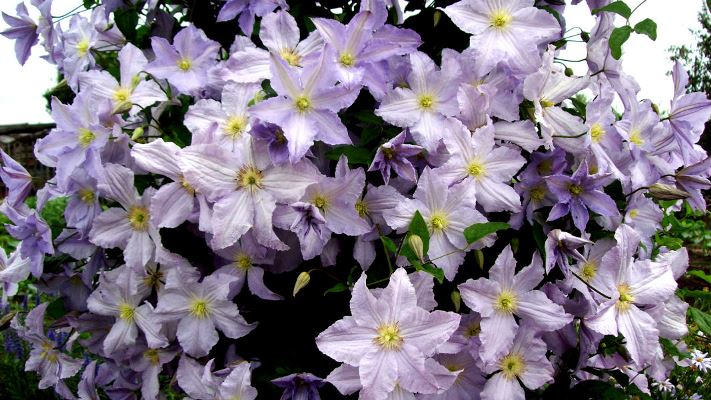
In the photo of Clematis Blue Angel, you can clearly see that its shoots spread over the soil surface, forming a beautiful floral carpet. The plant blooms from July to September, the flowers are medium in diameter up to 15 cm.
Application in design
Clematis Blue Angel is popular with landscape designers due to its unpretentiousness and decorativeness. Arches are decorated with liana, hedges are masked, gazebos, building facades and terraces are wrapped around.
The Blue Angel variety is also grown on a support more than 3-4 meters high. Combination of several varieties is also popular. Differences in the timing of bud blooming create a cascading flowering.
Clematis Blue Angel is picturesque in combination with honeysuckle, lemongrass, roses and conifers. Thanks to the compact root system, the cultivation of Blue Angel Clematis is possible in pots and containers. This variety can decorate not only on a personal plot, but also on a terrace or balcony.



